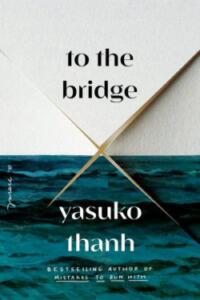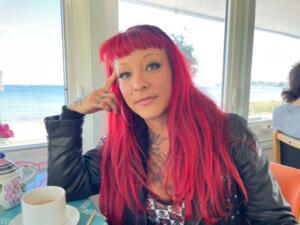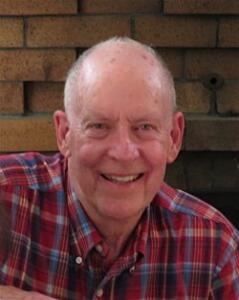1845 Tremors
To the Bridge
by Yasuko Thanh
Toronto: Hamish Hamilton, 2023
$24.95 / 9780735244672
Reviewed by W.H. New
*
 Specifically, Yasuko Thanh’s To the Bridge concerns a suicide attempt. More generally, it deals with time: the times when characters walked ‘to the bridge’ and sat, a different time when one of them jumped, and the time before that (before that too: generations in time). It also deals with the treacherous-time-during and the future-reflective time after. The bridge is a connector, or a possible connector, between what-was and what-may-be. Further, it’s a metaphor of danger: for this is a novel about a 16-year-old girl’s threatened suicide and her mother’s psychological collapse—and about the parents’ marriage, learned behaviour, rape, incest, and the inadequacy of social care. It’s a gripping read, but not a comfortable one. Reader, be warned.
Specifically, Yasuko Thanh’s To the Bridge concerns a suicide attempt. More generally, it deals with time: the times when characters walked ‘to the bridge’ and sat, a different time when one of them jumped, and the time before that (before that too: generations in time). It also deals with the treacherous-time-during and the future-reflective time after. The bridge is a connector, or a possible connector, between what-was and what-may-be. Further, it’s a metaphor of danger: for this is a novel about a 16-year-old girl’s threatened suicide and her mother’s psychological collapse—and about the parents’ marriage, learned behaviour, rape, incest, and the inadequacy of social care. It’s a gripping read, but not a comfortable one. Reader, be warned.
There are four main characters: Juliet, the gifted but somewhat self-isolated girl, who is on suicide watch after an almost fatal attempt to overdose; her mother, Rose, who tries to keep constant watch after the fact, but who loses her grip as her own ‘normal’ life disintegrates; Rose’s husband Syd, whose rather more laissez-faire attitude upsets Rose as much as Juliet’s self-destructive rebellion does; and Ron (friend, lover, listener, threat) whose role in the novel changes over time (and whose narrative function I’ll leave to the reader to discover: no spoilers). The few other figures—a psychological counsellor, medical personnel, and Juliet’s school friend Aleeki, for instance—are peripheral. The novel is told entirely from Rose’s point of view, at once narrowing what readers hear (but only perhaps take at face value) and intensifying the agony of estrangement, terror, and loss.
There are stages in Rose’s adjustment to Juliet’s action: surprise, anger, desire to explain, desire for control, terror at the possibility of loss, reflective fret about the tragedy of Juliet’s Shakespearean namesake, a lot of blame, and ultimately some rash and potentially destructive action. With those, the reader is taken on an exhausting trip through what might be called recuperation. ‘Advice’ seems useless, ‘action’ unwieldy, ‘answers’ unlikely or inconclusive; and throughout the narrative we are told of birds: birds resting, birds in flight, the bones of birds, the wings. The image is relevant to both Juliet and Rose, but as the novel proceeds it becomes more and more apparent that Rose’s life (past and current) is the dominant subject. Rose, who at first appears to be stable, is not. Her own parentage was troubled, early life checkered, marital history tense, and her sexual history is perhaps to be read as a class paradigm. And maybe her impulse to throw herself into at least a metaphorical suicide is meant to mirror Juliet’s own.

Which brings me, indirectly, to the novel’s first sentence, which I’m going to complain about. Why? Because the novel is generally so accomplished that the lapse in the first sentence, which sets up the narrative, initially diffuses the effect of what follows. It’s syntactically confusing, starting with the phrase: “When my mother died, I used to wonder . . .” No, you couldn’t have, the reader thinks, because the terms “when” and “used to” don’t make sense when they’re combined this way. “Used to” implies a process over a past time; but when “when” refers to a particular moment (in this case a death), the past time can’t straddle it: i.e., the “wondering” that follows the death can’t have started before the death happens. Or if that’s what’s intended, a reader might have expected the sentence to begin “Before my mother died, I used to wonder” or clarify the sequence more clearly — e.g., “When/after my mother died, I began to wonder” or just “I wondered.” So what exactly is a reader supposed to understand?
Perhaps the writerly intent here was to blur the past and future so that the mother’s (and grandmother’s) life history would read like a palimpsest over Juliet’s adolescent unhappiness. Or maybe the intent all along was to make time seem visceral rather than chronological. But I don’t think sequential confusion happens anywhere else in the book—indeed, the prose is almost frighteningly precise and lucid (with a back story obviously signalled)—so perhaps the first sentence just needed editing. Too bad: it spoils the way the book begins.
As for the future, the novel clearly ends with glimpses of a time still to happen (Rose pictured in a future present, waving)—which of course could be an imagined future, given the events of the book, and the ongoing action more wish-fulfillment than recorded history. If so, Thanh may be inviting the reader to assess Rose’s story less as a devastating account of grief and patched-together family life than as a destructive record of Munchausen’s Syndrome (which, at one point, Rose vehemently denies).
That said, the novel turns out to be much better than its first sentence. In passages of dialogue, the rhythms of speech are true-to-life; the pace is electric; the complex subject of adolescent suicide is demanding and dramatic. To the Bridge demonstrates empathy for the characters, paying serious attention to trauma yet revealing a capacity for lyricism in the midst of despair. The novel is filled with evocative passages, as when Juliet resists Rose’s attempts to talk with her (and Rose resists Juliet’s answers):
Movement outside her window caught my eye. Seagulls had landed on the roof; sparrows, circling the periphery, touched down the briefest of seconds, then flew away. A see-see-seeee and the caw of crows. Each sound expanded the absence of words between us …
Thanh is similarly affecting when Rose stops “in the middle of the bridge where the water was the deepest” and thinks about flight (and dying):
Mountains lanced the sky above; scarves of fog embraced the valley below … but what I liked best were the birds…. The challenge of capturing a bird’s flight on film … the difficulty of freezing time in general, the unique angle of the wing gone in a flash
Like childhood perhaps. Like parenting. Like love. Despite the way it begins, the book grows: Yasuko Thanh has written a tough evocative encounter with the tremors of change.
*
 W.H. (William) New has written five books for children, including The Year I Was Grounded (Tradewind, 2009), and he has written widely on short fiction in Canada, Australasia, and elsewhere. His most recent books include Neighbours (2017) and In the Plague Year (Rock’s Mills Press, 2021), reviewed here by Gary Geddes, and he is the author of Reading Mansfield & Metaphors of Form (McGill-Queen’s University Press, 1999). Editor’s note: William New has recently reviewed books by Carrie Mac, Corinna Chong, Robert Chursinoff, Harold Macy, Paul Sunga, Emily St. John Mandel, and Tamas Dobozy for The British Columbia Review.
W.H. (William) New has written five books for children, including The Year I Was Grounded (Tradewind, 2009), and he has written widely on short fiction in Canada, Australasia, and elsewhere. His most recent books include Neighbours (2017) and In the Plague Year (Rock’s Mills Press, 2021), reviewed here by Gary Geddes, and he is the author of Reading Mansfield & Metaphors of Form (McGill-Queen’s University Press, 1999). Editor’s note: William New has recently reviewed books by Carrie Mac, Corinna Chong, Robert Chursinoff, Harold Macy, Paul Sunga, Emily St. John Mandel, and Tamas Dobozy for The British Columbia Review.
*
The British Columbia Review
Interim Editors, 2023-24: Trevor Marc Hughes (non-fiction), Brett Josef Grubisic (fiction)
Publisher: Richard Mackie
Formerly The Ormsby Review, The British Columbia Review is an on-line book review and journal service for BC writers and readers. The Advisory Board consists of Jean Barman, Wade Davis, Robin Fisher, Barry Gough, Hugh Johnston, Kathy Mezei, Patricia Roy, Maria Tippett, and Graeme Wynn. Provincial Government Patron (since September 2018): Creative BC. Honorary Patron: Yosef Wosk. Scholarly Patron: SFU Graduate Liberal Studies.
“Only connect.” – E.M. Forster
One comment on “1845 Tremors”